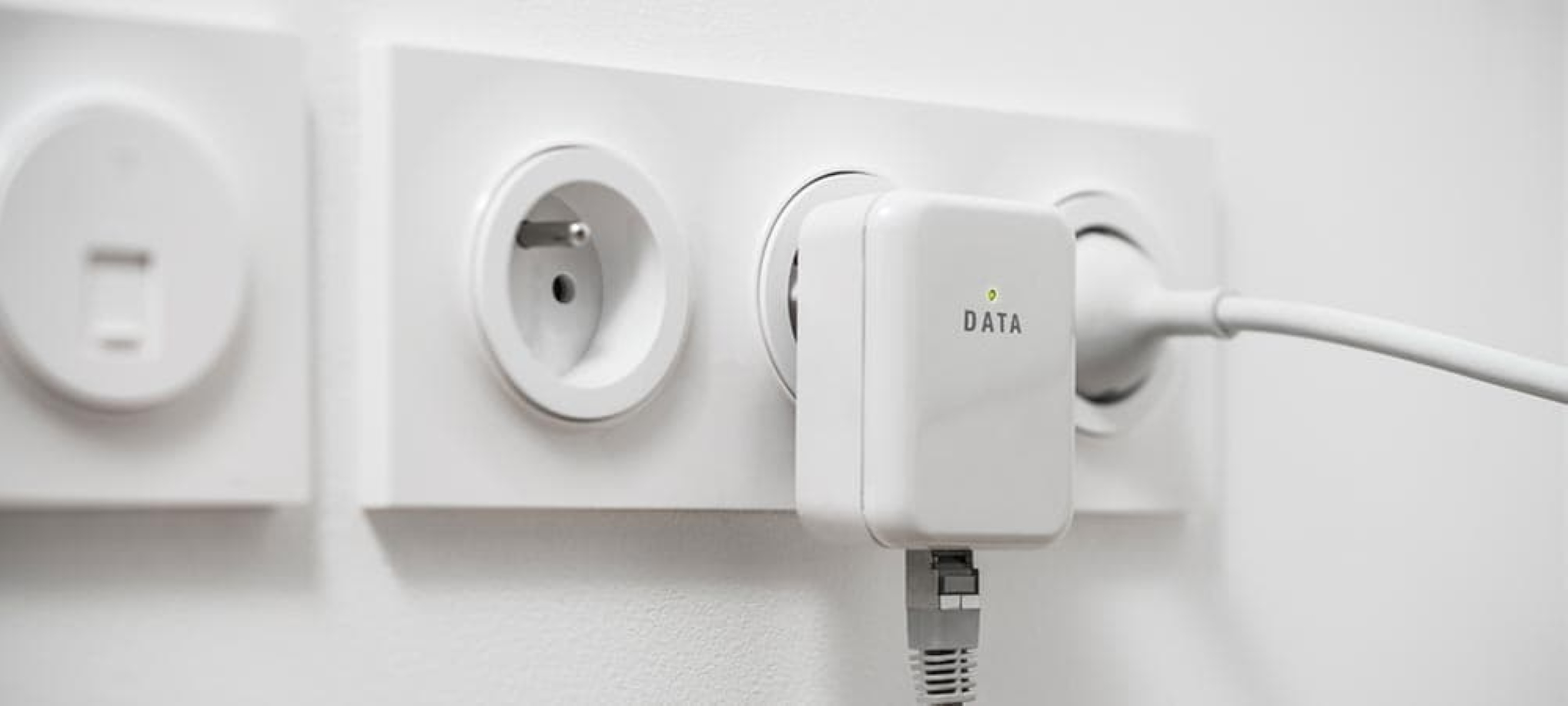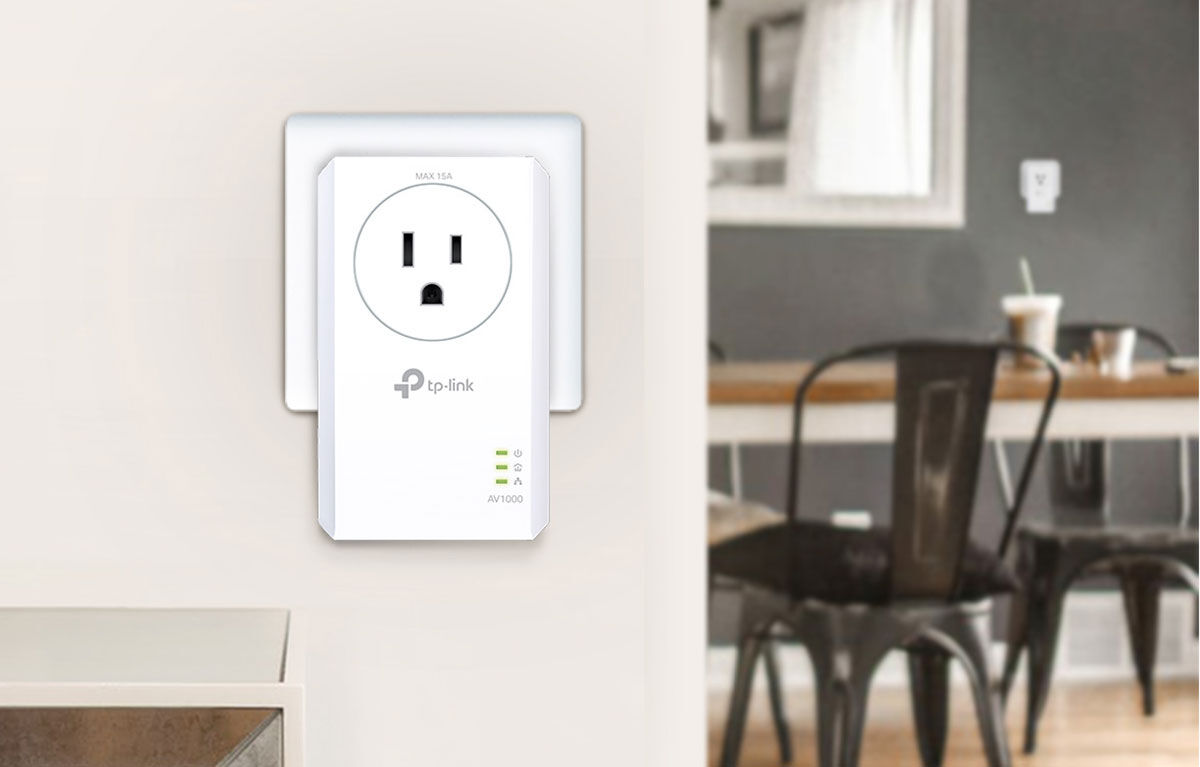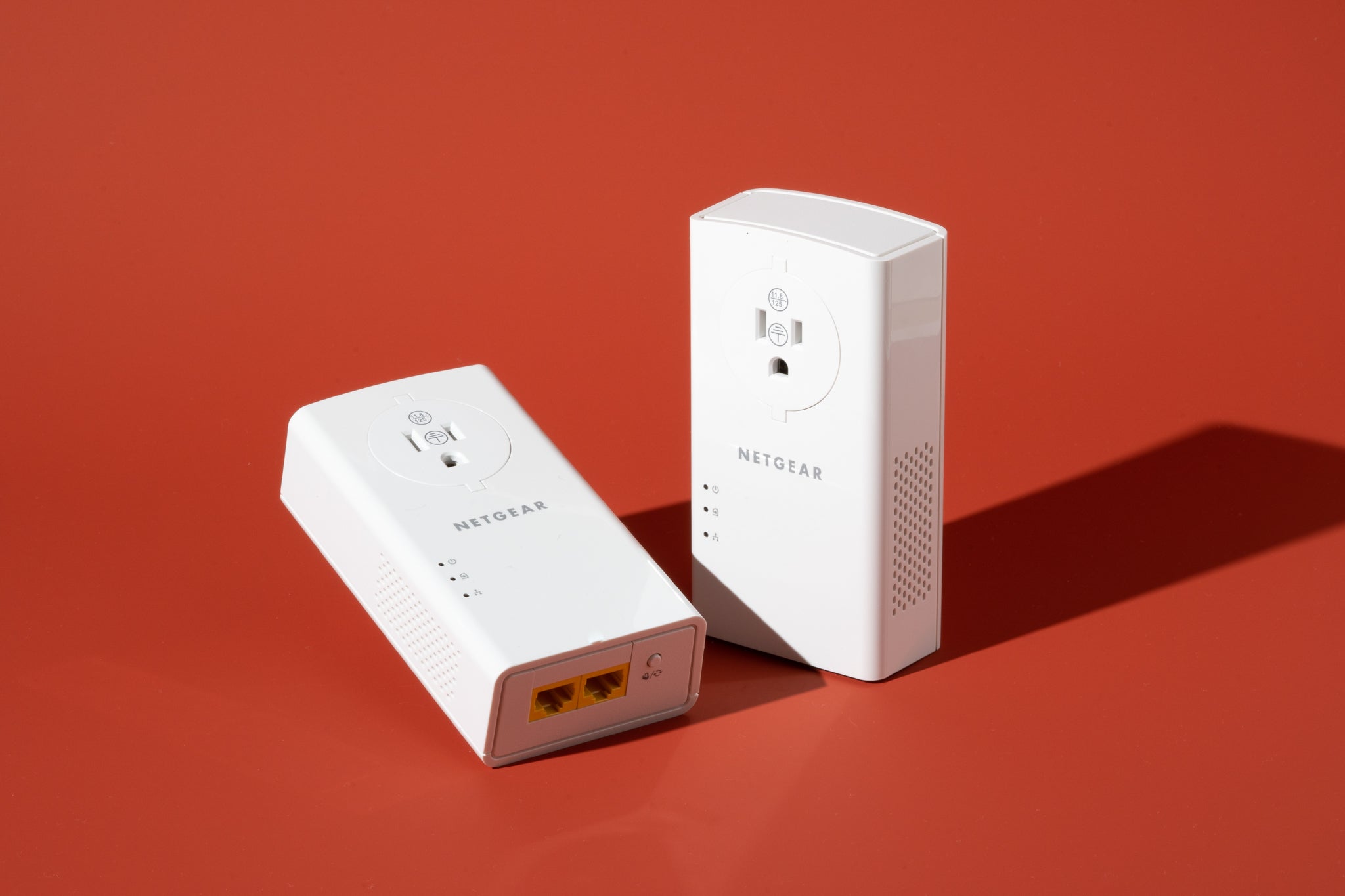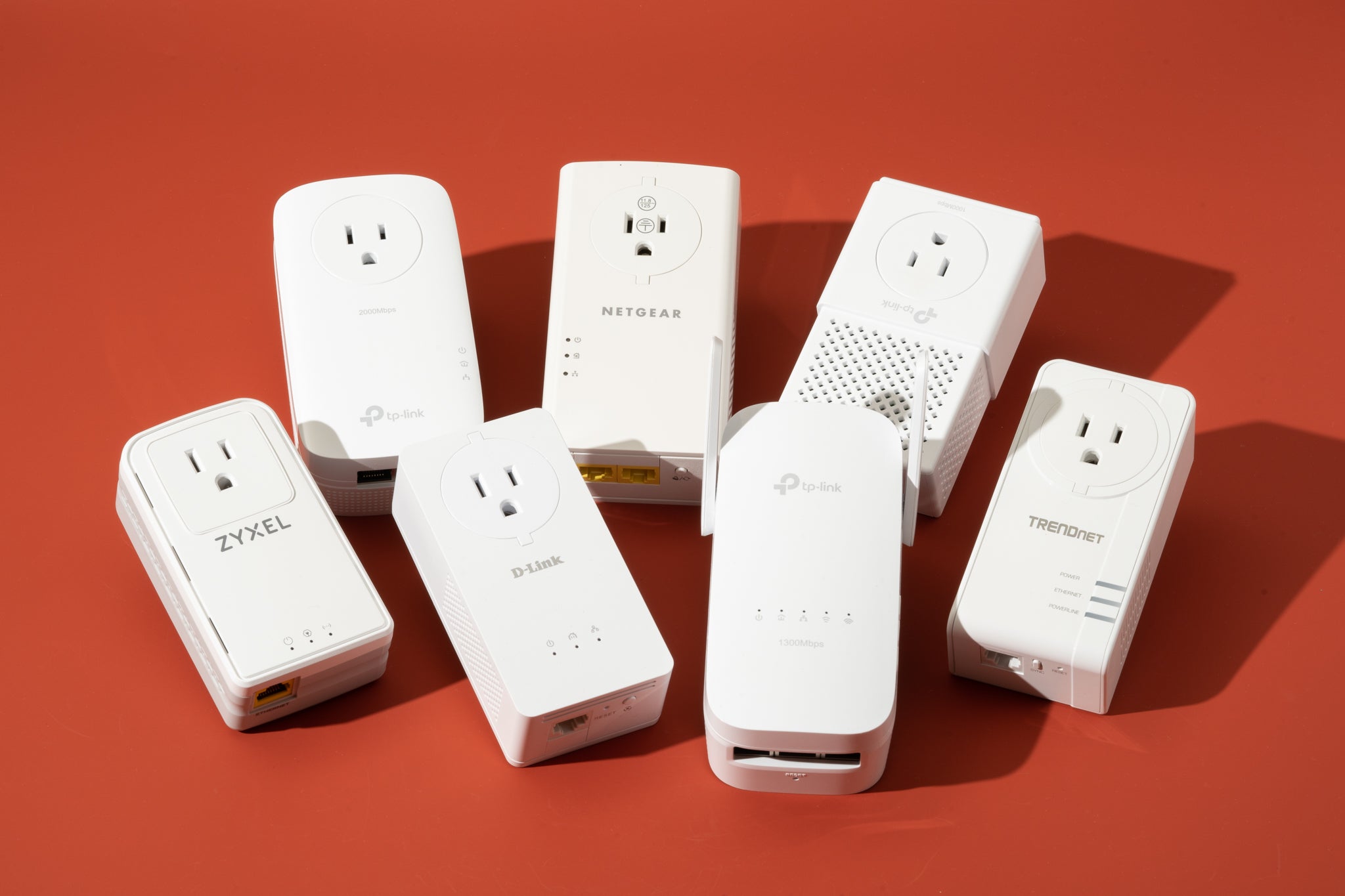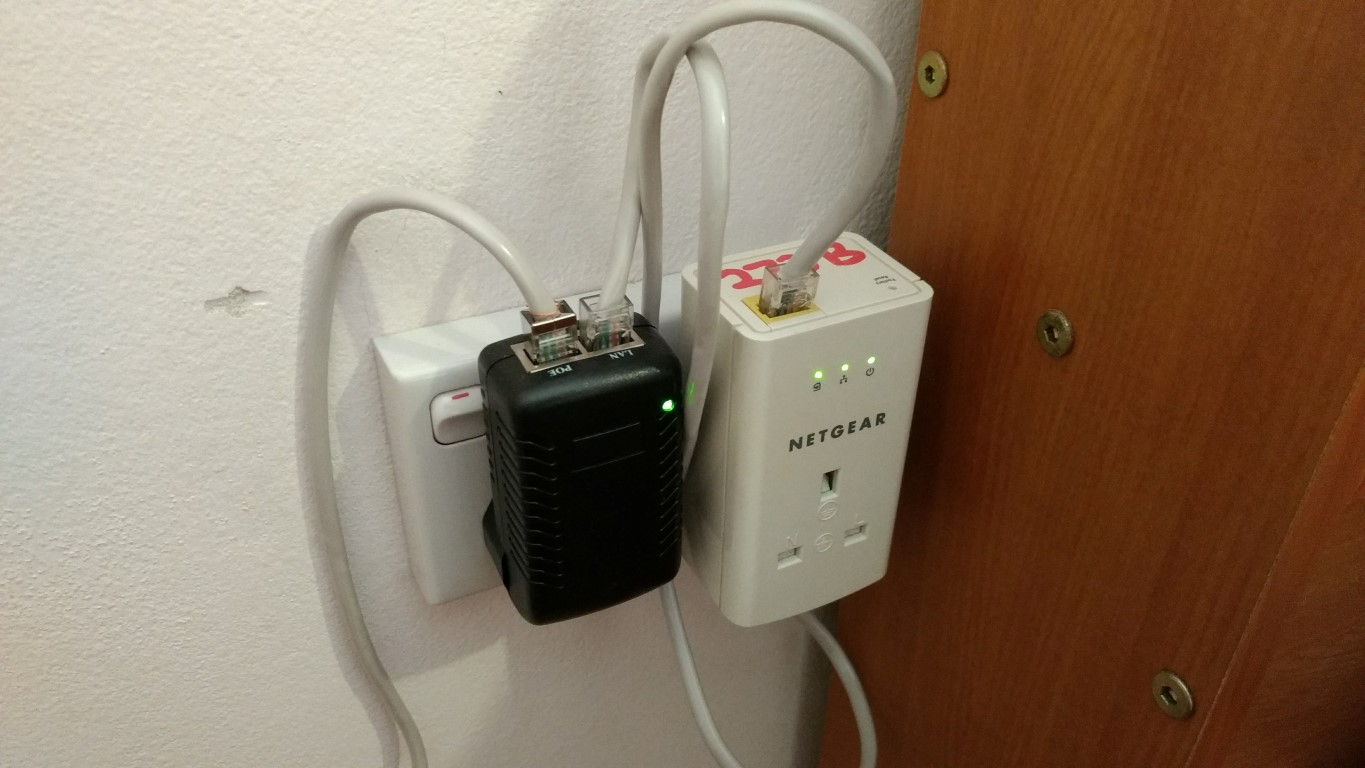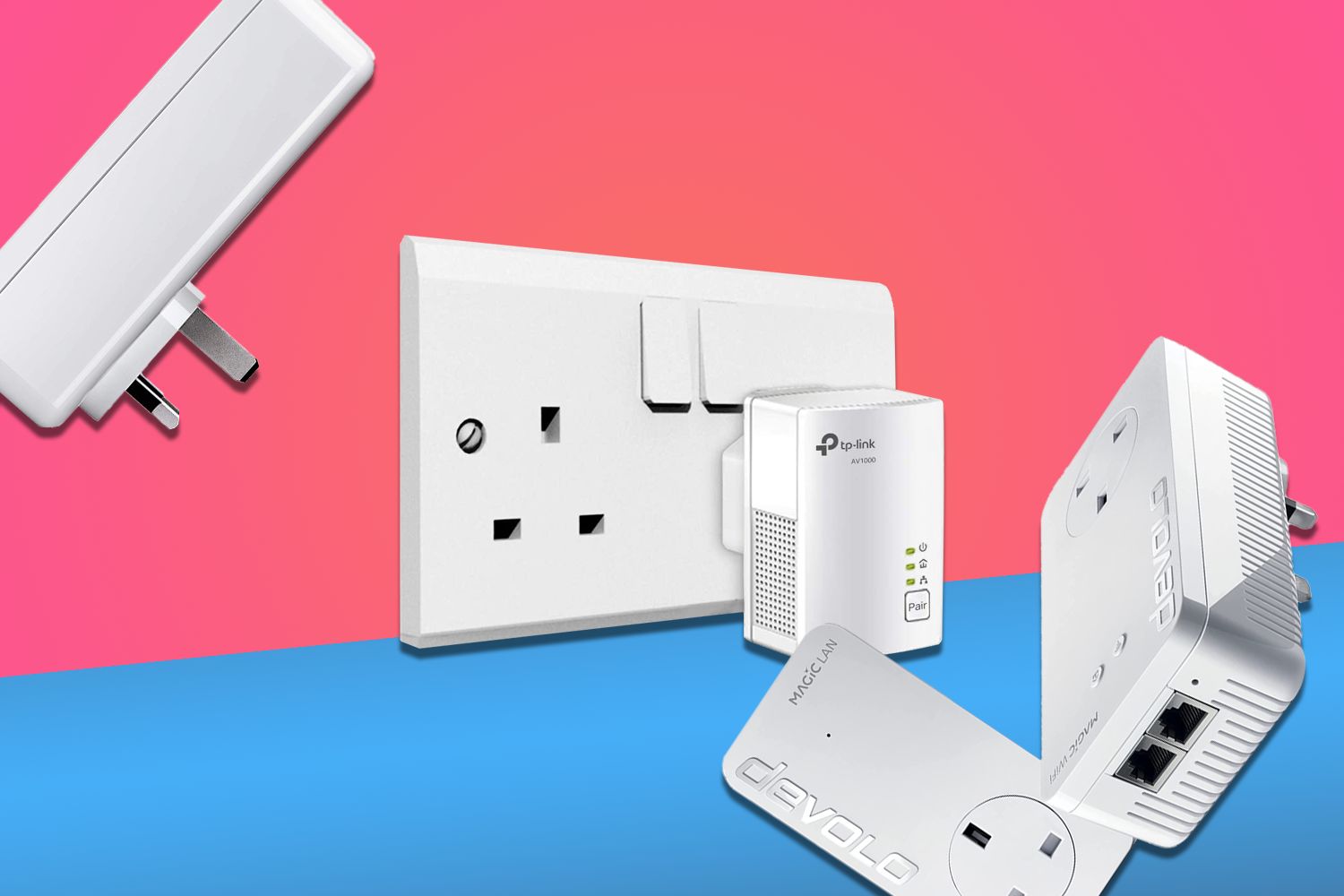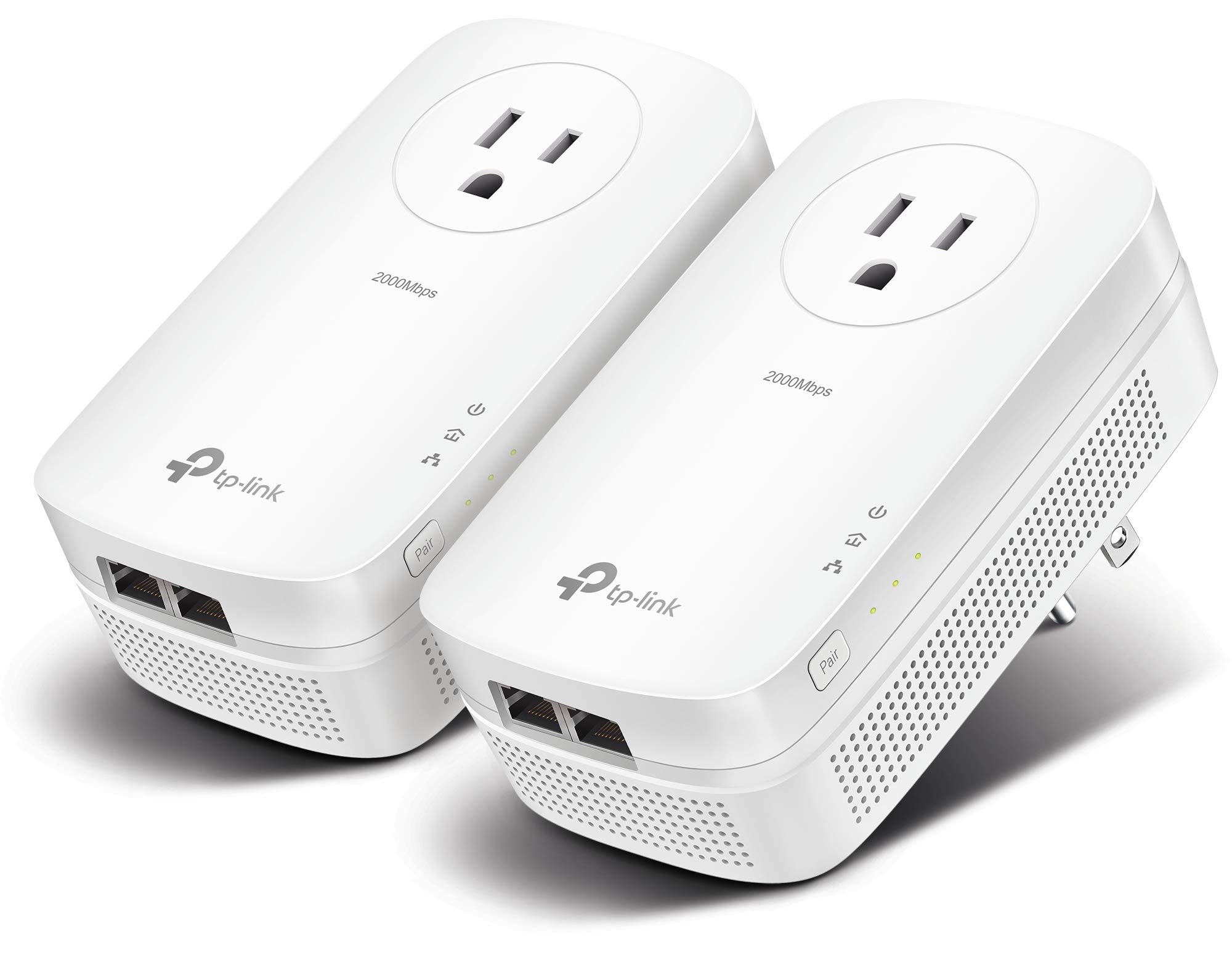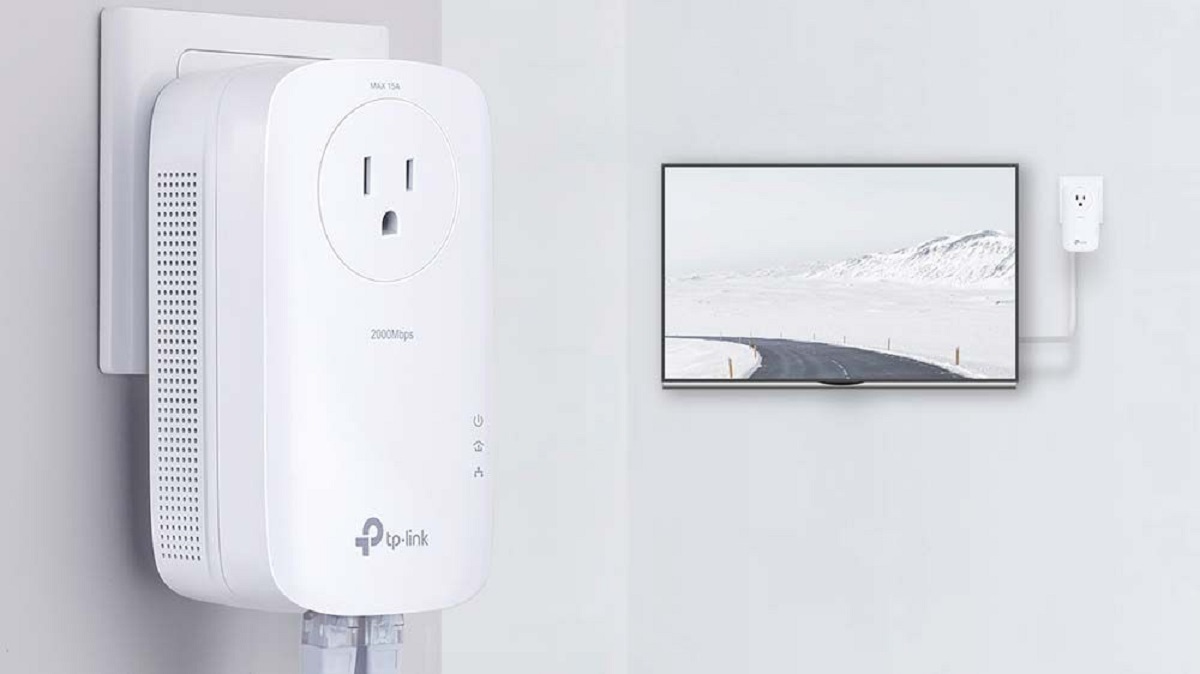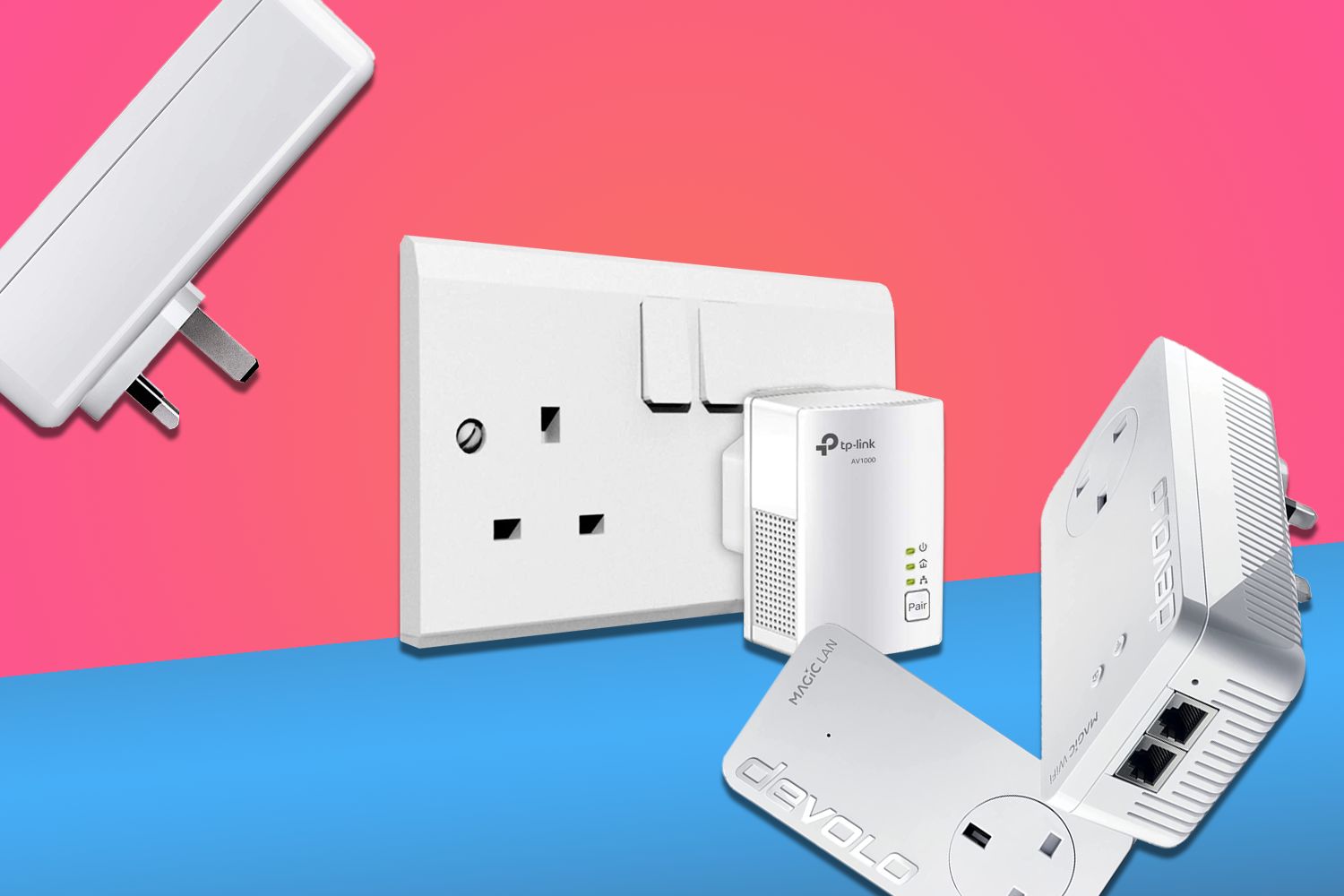Introduction
Ethernet powerline adapters are innovative devices that allow you to extend your wired network connection using your existing power lines. With these adapters, you can turn any electrical outlet into a network port, providing a convenient solution for areas where Wi-Fi signals are weak or unreliable.
In today’s digital age, a stable and fast internet connection is essential. Whether you are streaming movies, playing online games, or working from home, a reliable network connection is paramount. While Wi-Fi is popular and convenient, it can sometimes be plagued by issues like signal interference, dead spots, or limited coverage range.
Ethernet powerline adapters offer an alternative solution that is both effective and easy to set up. By leveraging your electrical wiring, these adapters create a wired network connection without the need for additional cables or drilling holes in walls. This technology has gained popularity in recent years, revolutionizing the way we connect our devices to the internet.
In this article, we will explore the inner workings of Ethernet powerline adapters, understand how they transmit data over power lines, and unravel the advantages and limitations of this technology. We will also guide you on how to set up these adapters and provide tips for choosing the right one to suit your needs.
So, if you’re tired of weak Wi-Fi signals and are looking for a reliable and efficient way to connect your devices to the internet, read on to discover how Ethernet powerline adapters can transform your network experience.
What are Ethernet Powerline Adapters?
Ethernet powerline adapters, also known as powerline network adapters or PLC (Power Line Communication) adapters, are devices that utilize your existing electrical wiring to extend your network connection throughout your home or office. These adapters work by converting the electrical signal into a data signal, allowing you to establish a wired network connection without the need for additional Ethernet cables.
These adapters typically come in pairs, with one adapter connecting to your router or modem and the other adapter being plugged into the desired location where you need an internet connection. The two adapters then communicate with each other via your electrical wiring, effectively turning your power lines into a network cable.
Ethernet powerline adapters have become increasingly popular due to their ease of use and convenience. They provide a solution for areas where Wi-Fi signals are weak or unreliable, such as basements, attics, or rooms located far away from the router.
These adapters are commonly used for various purposes, including streaming high-definition videos, online gaming, VoIP (Voice over Internet Protocol) calls, and connecting smart devices such as TVs, gaming consoles, and streaming devices to the internet. They offer a stable and high-speed network connection, which is particularly beneficial for bandwidth-intensive activities.
It is important to note that Ethernet powerline adapters are compatible with most networking standards, including Ethernet, Fast Ethernet, and Gigabit Ethernet. This means that you can connect multiple devices to the adapters using Ethernet cables, allowing for reliable and high-performance network connectivity.
In the next section, we will delve deeper into the workings of Ethernet powerline adapters and discuss how they transmit data over power lines.
How do Ethernet Powerline Adapters Work?
Ethernet powerline adapters work by utilizing a technology called Power Line Communication (PLC) to transmit data signals over your existing electrical wiring. These adapters convert the electrical signal into a data signal, allowing you to establish a wired network connection without the need for additional cables or drilling holes in walls.
When you plug in an Ethernet powerline adapter into an electrical outlet, it sends out a high-frequency carrier signal. This carrier signal piggybacks on the existing electrical wiring in your home or office, effectively turning the entire electrical system into a network infrastructure.
To establish a connection between two powerline adapters, they need to be on the same electrical circuit in your building. This means that the electrical wiring connecting the two adapters should be part of the same electrical circuit. This circuit can span across multiple rooms, floors, or even different buildings if they are all connected to the same electrical grid.
To transmit data, the sender adapter modulates the data onto the carrier signal and injects it into the electrical wiring. The receiver adapter then demodulates the received signal, extracting the original data transmitted. This process allows for bi-directional communication, enabling you to send and receive data over the powerline network.
The quality and performance of Ethernet powerline adapters depend on various factors, including the quality of your electrical wiring, the distance between the adapters, and the amount of electrical noise or interference present. Ideally, the adapters should be plugged directly into the wall outlets, avoiding the use of surge protectors or extension cords that can impact signal quality.
It’s worth mentioning that Ethernet powerline adapters are designed to coexist with your electrical devices without causing interference. They operate on different frequency bands and are capable of filtering out electrical noise, ensuring a stable and reliable network connection.
In the next section, we will dive into the powerline signal and discuss the encryption and security features of Ethernet powerline adapters.
The Powerline Signal
The powerline signal used by Ethernet powerline adapters is a high-frequency carrier signal that piggybacks on the existing electrical wiring in your home or office. This signal carries the data packets between the sender and receiver adapters, enabling the transmission of information over the power lines.
The powerline signal operates in a frequency range that is higher than the typical AC power frequency (50-60Hz). It usually ranges from a few hundred kilohertz (kHz) to several megahertz (MHz), depending on the specific powerline adapter model and standard being used.
The carrier signal used for powerline communication is modulated with the data packets to be transmitted. The modulation technique used can vary, with some adapters employing frequency-shift keying (FSK), while others use orthogonal frequency-division multiplexing (OFDM) to achieve higher data rates and better resistance to interference.
To ensure reliable communication, powerline adapters typically incorporate error correction and signal amplification techniques. Error correction algorithms help in the detection and correction of transmission errors, improving the overall data integrity. Signal amplification techniques help boost the powerline signal, compensating for the attenuation that occurs as the signal traverses the electrical wiring.
The powerline signal is subject to various factors that can affect its quality and performance. Distance plays a crucial role, as the signal strength gradually diminishes with longer distances. Therefore, it is recommended to keep the distance between the powerline adapters as short as possible to maintain optimal performance.
Electrical noise and interference can also impact the powerline signal. Electronics, appliances, and other electrical devices connected to the same electrical circuit can introduce noise that interferes with the powerline communication. However, modern powerline adapters employ advanced filtering techniques to minimize the impact of electrical noise and interference, ensuring a stable and reliable network connection.
In summary, the powerline signal used by Ethernet powerline adapters is a modulated carrier signal that travels over the electrical wiring, enabling data transmission between the sender and receiver adapters. The signal is subject to distance limitations and can be affected by electrical noise and interference. However, powerline adapters implement error correction and signal amplification techniques to ensure reliable and efficient communication over the power lines.
Encryption and Security
Security is a crucial aspect when it comes to networking, and Ethernet powerline adapters take it seriously. These adapters offer built-in encryption and security features to protect your network connection and data transmission over the power lines.
One common encryption standard used by powerline adapters is the Advanced Encryption Standard (AES). AES is a widely adopted encryption algorithm that provides a high level of security. It ensures that the data transmitted between the powerline adapters is encrypted, making it difficult for unauthorized individuals to intercept and decipher the information.
When setting up your powerline network, you will typically have the option to create a secure network by assigning a password or using a security key. This password or key is used to encrypt the data that is transmitted between the adapters, ensuring that only devices with the correct password can access the network.
It is important to note that the encryption and security features provided by powerline adapters protect your data from being accessed by someone on the same electrical circuit. However, they do not provide protection from outside threats or hackers who may gain physical access to your electrical wiring.
To enhance security, it is recommended to change the default password on your powerline adapters and choose a strong, unique password. This will reduce the risk of unauthorized access to your network.
In addition to encryption, powerline adapters often employ other security measures, such as frequency filtering and network isolation. Frequency filtering helps prevent interference from signals on neighboring electrical circuits, ensuring that your powerline network operates without interference from other powerline networks nearby.
Network isolation is another security feature that prevents devices connected to the powerline network from accessing devices on the main network or other powerline networks in the vicinity. This helps maintain the integrity and privacy of your network and prevents unauthorized access to your devices and data.
Overall, Ethernet powerline adapters offer robust encryption and security features to protect your network connection and data transmission. By implementing encryption algorithms and providing options for password protection, these adapters ensure that your powerline network remains secure and your data remains confidential.
Setting Up Ethernet Powerline Adapters
Setting up Ethernet powerline adapters is a straightforward process that can be completed in just a few simple steps. Here’s a guide to help you get started:
- First, ensure that you have at least two Ethernet powerline adapters. One adapter will be connected to your router or modem, and the other adapter will be placed in the desired location to extend your network connection.
- Plug in the first adapter near your router or modem and connect it to the device using an Ethernet cable. This adapter will act as the sender and establish the initial connection.
- Next, plug in the second adapter in the location where you need an extended network connection. This may be in a different room, floor, or even in a separate building, as long as it is on the same electrical circuit.
- Connect the second adapter to the device you want to provide internet connectivity to using another Ethernet cable. This adapter will act as the receiver and receive the network signal from the sender adapter.
- Once both adapters are connected and powered on, they will automatically establish a powerline network connection. LED lights on the adapters will indicate the status of the connection, usually with one light indicating a successful connection and another light indicating the strength of the signal.
- If your powerline adapters have a security feature, it is recommended to set a password or security key to protect your network. This can usually be done through a configuration utility or web interface provided by the manufacturer.
It is worth noting that certain powerline adapters also have additional features, such as integrated Wi-Fi or built-in power outlets. These features can further enhance the convenience and flexibility of your network setup.
When setting up Ethernet powerline adapters, consider the following tips to ensure optimal performance:
- Plug the adapters directly into the wall outlets. Avoid using power strips, surge protectors, or extension cords, as they can introduce signal interference and impact performance.
- Make sure the distance between the adapters is within the specified range of the adapters you are using. Longer distances may result in weaker signal strength and slower speeds.
- Avoid placing the adapters near sources of electrical noise, such as large appliances or power converters, as this can also affect performance.
By following these simple steps and considering the tips mentioned, you can easily set up Ethernet powerline adapters and enjoy reliable and convenient network connectivity throughout your home or office.
Choosing the Right Ethernet Powerline Adapter
When selecting an Ethernet powerline adapter, there are several factors to consider to ensure that you choose the right one that meets your specific needs. Here are some key points to keep in mind when making your decision:
- Data Transfer Speed: Consider the data transfer speed of the powerline adapters. Look for adapters that offer high-speed options, such as Gigabit Ethernet, if you require fast and seamless connectivity for bandwidth-intensive activities like streaming HD videos or online gaming.
- Interface: Determine the interface you need on the powerline adapter. Most adapters come with one or more Ethernet ports, allowing you to connect multiple devices. Some adapters also offer additional features like built-in Wi-Fi or power outlets, providing extra functionality and flexibility.
- Compatibility: Ensure that the powerline adapters are compatible with your existing network infrastructure. Check the compatibility with your router or modem, as well as the Ethernet standards supported (e.g., Ethernet, Fast Ethernet, Gigabit Ethernet) to ensure seamless integration with your network setup.
- Security: Look for powerline adapters that offer advanced encryption and security features like AES encryption and password protection. This will help safeguard your network connection and protect your data from unauthorized access.
- Brand and Reputation: Consider purchasing powerline adapters from reputable brands that have a track record of producing reliable and high-quality networking equipment. Reading reviews and customer feedback can also provide valuable insights into the performance and reliability of different adapter models.
- Price and Budget: Evaluate your budget and choose powerline adapters that offer the best balance between features and affordability. Remember, higher-priced adapters often come with advanced features and faster speeds, but they may not always be necessary for your specific requirements.
Additionally, it can be helpful to consult with an IT professional or knowledgeable salesperson who can provide specific recommendations based on your network setup and requirements.
By carefully considering these factors and assessing your specific needs, you can choose the right Ethernet powerline adapter that will provide you with reliable and high-speed network connectivity throughout your home or office.
Advantages and Limitations of Ethernet Powerline Adapters
Ethernet powerline adapters offer numerous advantages that make them a popular choice for extending network connectivity. However, it’s important to also consider their limitations. Let’s explore the advantages and limitations of Ethernet powerline adapters:
Advantages:
- Easy Installation: Ethernet powerline adapters are incredibly easy to set up. Simply plug them into electrical outlets, and you can instantly establish a wired network connection without the need for additional cables or complicated configurations.
- Wider Coverage: Powerline adapters extend network coverage to areas where Wi-Fi signals may be weak or unreliable. With these adapters, you can access a network connection in basements, attics, or rooms that are far away from the router.
- Stable and Reliable Connection: Ethernet powerline adapters provide a stable and reliable network connection, free from the interference and congestion that can affect Wi-Fi signals. This makes them ideal for bandwidth-intensive activities like streaming high-definition videos or online gaming.
- Convenient Network Expansion: If you need to expand your network to reach different parts of your home or office, powerline adapters offer a convenient solution. You can easily add additional powerline adapters to extend the network coverage without the need for complex wiring or drilling.
- Compatibility: Ethernet powerline adapters are compatible with most networking standards and devices that have an Ethernet port, including computers, gaming consoles, smart TVs, and streaming devices. This allows for seamless integration into your existing network infrastructure.
Limitations:
- Performance Variability: The performance of powerline adapters can vary depending on factors such as the quality of your electrical wiring, distance between adapters, and presence of electrical noise. Older or poorly maintained electrical wiring may result in slower speeds and reduced performance.
- Shared Electrical Circuit: Ethernet powerline adapters require the sender and receiver adapters to be on the same electrical circuit. If they are connected to different circuits or phases, the adapters may not be able to establish a connection.
- Unsuitable for Some Environments: Powerline adapters may not function optimally in certain environments with electrical interference, such as homes with old or faulty wiring, or buildings with heavy electrical equipment. In such cases, alternative networking solutions may be more suitable.
- Security Concerns: While powerline adapters offer encryption and security features, it’s important to remember that the network signal is being transmitted over the electrical wiring, which is accessible to all devices connected to the same circuit. This means that users on the same electrical circuit could potentially intercept the network traffic.
Overall, Ethernet powerline adapters offer a convenient and effective way to extend network connectivity using existing electrical wiring. They provide a stable and reliable connection, but their performance can vary and they may not be suitable for all environments. By considering these advantages and limitations, you can determine if Ethernet powerline adapters are the right choice for your networking needs.
Troubleshooting and FAQs
Despite their ease of use, Ethernet powerline adapters may encounter occasional issues. Here are some common troubleshooting steps and frequently asked questions to help address any problems you may encounter:
Troubleshooting:
- No Powerline Connection: Ensure that both powerline adapters are securely plugged into wall outlets and powered on. Check that they are on the same electrical circuit and that the LEDs on the adapters indicate a successful connection.
- Slow Speeds: If you’re experiencing slow speeds, ensure that the powerline adapters are plugged directly into wall outlets and not using power strips or surge protectors. Also, try repositioning the adapters to minimize interference and improve signal strength.
- Intermittent Connection: If the powerline connection drops or becomes unstable, check for any electrical noise sources (e.g., old appliances) that might be interfering with the signal. Moving the adapters to different outlets or using filters on appliances can help mitigate such interference.
- Security Concerns: If you have concerns about the security of your powerline network, consider setting a strong password or security key for your adapters to prevent unauthorized access.
FAQs:
- Can powerline adapters work in all types of electrical systems?
Powerline adapters typically work well in most residential and commercial electrical systems. However, they may not function optimally in environments with certain electrical configurations or heavy electrical interference. - Can powerline adapters be used in multi-story buildings?
Yes, powerline adapters can be used in multi-story buildings as long as all adapters are connected to the same electrical circuit. However, performance may vary depending on the quality and condition of the electrical wiring between floors. - Can I connect multiple devices to a single powerline adapter?
Yes, you can connect multiple devices to a single powerline adapter by using an Ethernet switch or connecting them directly if the adapter has multiple ports. This allows you to expand your network and connect multiple devices in the same location. - Do powerline adapters work with Wi-Fi?
Some powerline adapters come with built-in Wi-Fi, allowing you to create a wireless network in addition to extending the wired network. However, not all powerline adapters have this feature, so check the specifications before purchasing. - What is the maximum achievable speed with powerline adapters?
The maximum speed achievable with powerline adapters depends on various factors, including the quality of your electrical wiring, distance between adapters, and electrical interference. Modern powerline adapters can achieve speeds of up to Gigabit Ethernet (1000 Mbps), but actual speeds may vary in real-world conditions.
If you encounter a persistent issue with your Ethernet powerline adapters, it’s recommended to consult the user manual or reach out to the manufacturer’s support for troubleshooting assistance specific to your device and situation.
Conclusion
Ethernet powerline adapters provide an effective and convenient solution for extending network connectivity using your existing electrical wiring. With these adapters, you can overcome the limitations of Wi-Fi signals and enjoy a stable and reliable wired connection throughout your home or office.
We explored how Ethernet powerline adapters work by utilizing Power Line Communication (PLC) technology to transmit data signals over the power lines. By converting the electrical signal into a data signal, these adapters establish a wired network connection without the need for additional cables or complex installations.
We also discussed the advantages of Ethernet powerline adapters, including their easy installation, wider coverage, stable connection, and compatibility with various networking standards. These adapters offer flexibility and convenience, making them suitable for bandwidth-intensive activities such as streaming, gaming, and connecting multiple devices simultaneously.
However, it’s important to consider the limitations of Ethernet powerline adapters, such as the potential impact of electrical noise, distance limitations, and security concerns. By understanding these limitations and properly setting up the adapters, you can optimize their performance and mitigate any potential issues.
To ensure a successful setup, we provided tips for choosing the right Ethernet powerline adapter, considering factors such as data transfer speed, compatibility, security features, and budget. Selecting a reputable brand and reading reviews can help ensure you acquire a reliable and high-quality adapter that meets your specific needs.
Lastly, we covered troubleshooting steps and addressed commonly asked questions to assist you in resolving any potential issues and maximizing the performance of your Ethernet powerline adapters. Remember, if you encounter persistent issues, consulting the user manual or reaching out to the manufacturer’s support can provide personalized assistance.
In conclusion, Ethernet powerline adapters offer a practical and efficient solution for extending your network connectivity. By leveraging your existing electrical wiring, these adapters provide a stable and reliable wired connection, addressing the limitations of Wi-Fi signals. Whether you need to connect devices in different rooms or improve network coverage in areas with weak Wi-Fi, Ethernet powerline adapters can transform your network experience and enhance your connectivity.







